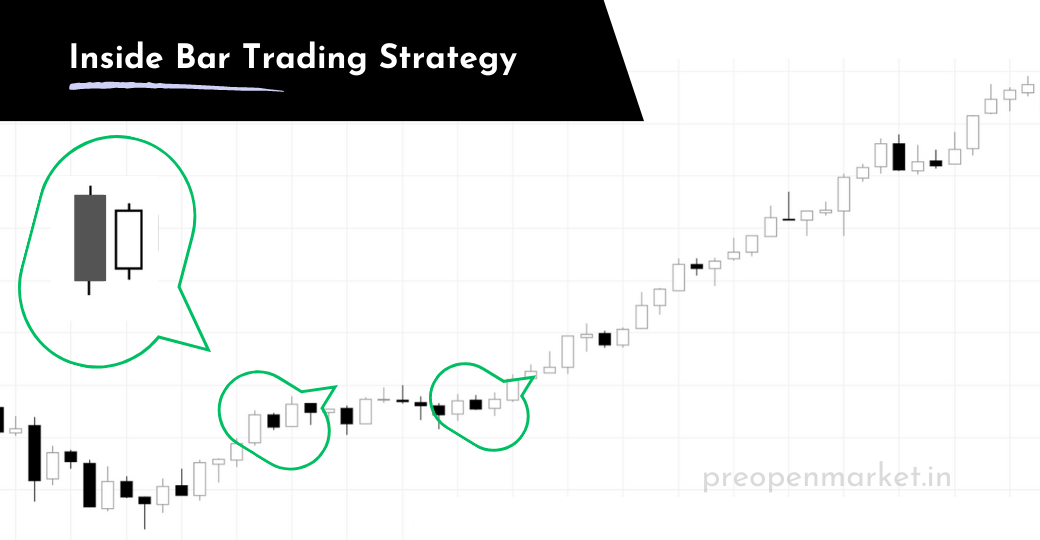Inside Bar Trading Strategy
A popular price action-based approach
Inside Bar Trading Strategy
The Inside Bar Trading Strategy is a popular price action-based approach used by traders to identify potential continuation or reversal trading opportunities. This strategy focuses on recognizing inside bar patterns, which indicate a period of consolidation or indecision in the market. An inside bar forms when the entire price range (high to low) of one candle is contained within the high and low of the preceding candle.

Here's how the Inside Bar Trading Strategy works:
1. Inside Bar Formation: An inside bar forms when the high and low of a candle are entirely within the high and low of the previous candle. The inside bar represents a contraction in price range and suggests a temporary balance between buyers and sellers.
2. Breakout Strategy: Traders using the inside bar strategy typically wait for a breakout from the range of the inside bar. A bullish breakout occurs when the price breaks above the high of the inside bar, while a bearish breakout happens when the price breaks below the low of the inside bar.
3. Entry and Stop Loss: Once the breakout occurs, traders enter a trade in the direction of the breakout. They place a stop-loss order on the opposite side of the inside bar's range. For a bullish breakout, the stop-loss is placed below the low of the inside bar, and for a bearish breakout, it's placed above the high of the inside bar.
4. Target and Risk Management: Traders often set profit targets based on support and resistance levels, trendlines, or other technical analysis tools. They aim to achieve a risk-to-reward ratio that makes the trade worthwhile. Some traders also consider trailing their stop-loss as the trade moves in their favor.
5. Confirmation and Additional Factors: While the inside bar pattern itself can provide a valid signal, traders may enhance their analysis by considering additional factors such as the overall trend, volume, and other technical indicators.
If the prevailing trend is up, you would enter a long position. If the prevailing trend is down, you would enter a short position.
You can also use the inside bar pattern to trade against the prevailing trend. In this case, you would wait for the inside bar to close near the bottom of the inside bar range if you are trading a long position, or near the top of the inside bar range if you are trading a short position.
The inside bar trading strategy is a relatively reliable trading pattern, but it is important to use it in conjunction with other technical analysis tools. You should also use a stop loss to limit your losses in case the trade goes against you.
It's important to note that not all inside bars will lead to successful breakouts. Traders need to exercise patience and consider risk management to avoid false breakouts and potential losses.
As with any trading strategy, it's recommended to test the Inside Bar Trading Strategy on historical data and practice in a demo trading environment before applying it to real-money trading. Traders should also adapt the strategy to their trading style, risk tolerance, and overall trading plan.




